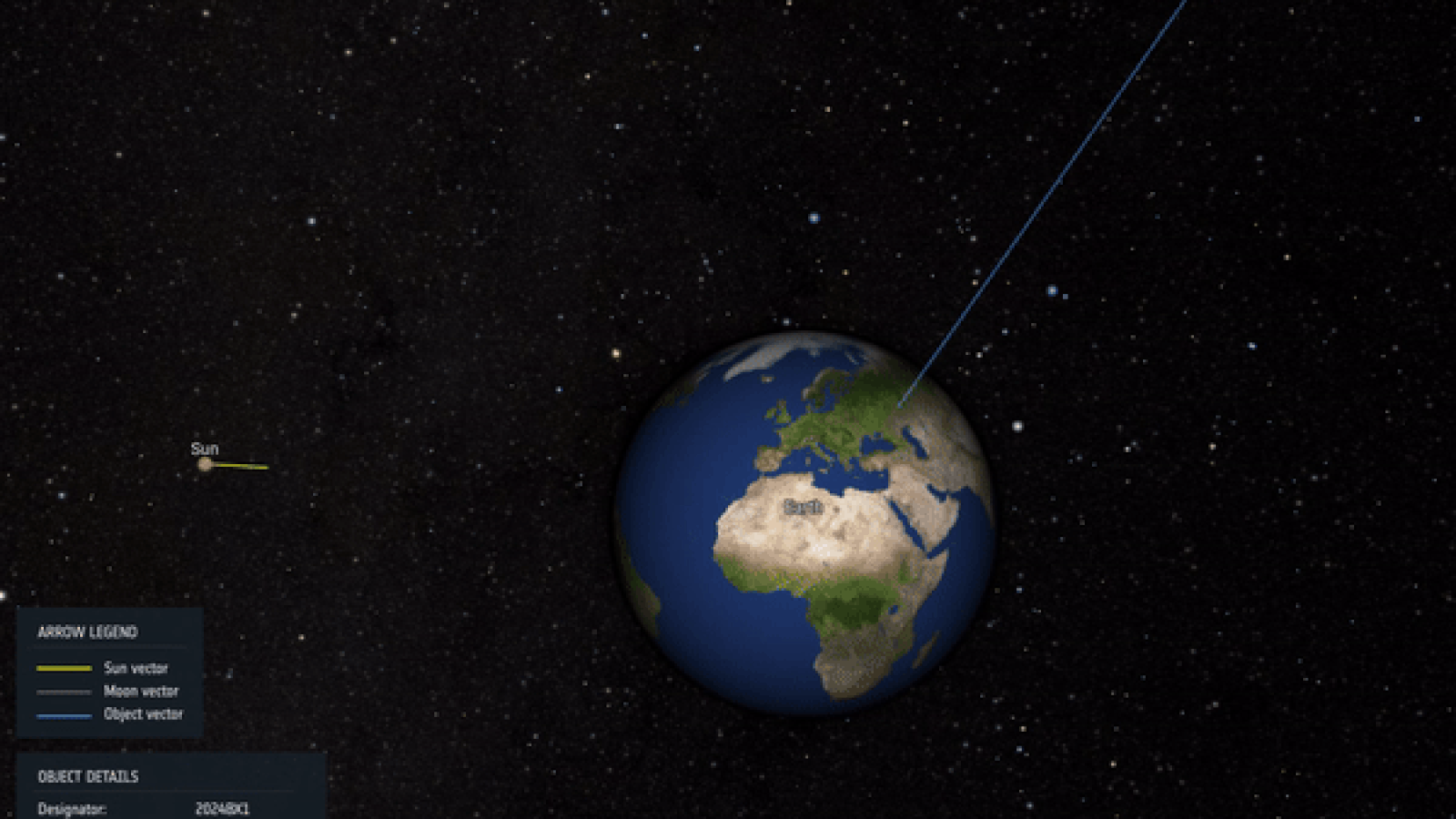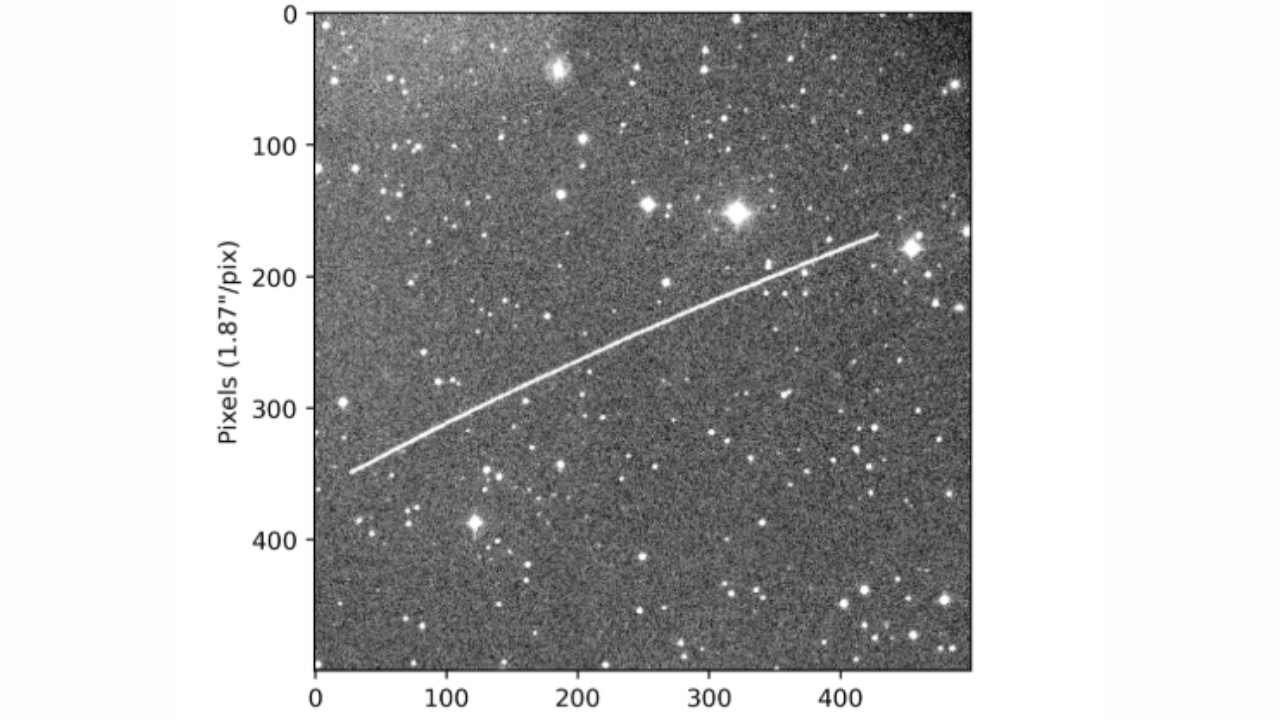
An asteroid that tore through the atmosphere over Germany in January was spinning faster than any other near-Earth object ever recorded, new research suggests.
The space rock, dubbed 2024 BX1, turned into a fireball and exploded over Berlin in the early hours of Jan. 21. Although small asteroids on collision courses with Earth are typically detected only when they crash into the atmosphere, scientists spotted this one roughly three hours before impact.
That's not the only way 2024 BX1 was unusual, according to a paper published to the preprint database arXiv on April 5. Researchers think the asteroid, which was traveling 31,000 mph (50,000 km/h), was rotating once every 2.6 seconds — the fastest spin ever seen for an asteroid.
Previously, the record for the fastest-spinning asteroid belonged to a flying rock called 2020 HS7, which showed a rotation period of 2.99 seconds. That asteroid measured between 13 and 24 feet (4 to 8 meters) in diameter, which is slightly bigger than 2024 BX1 and may explain why the latter spun faster.
Asteroids spin for several reasons, such as being propelled back into space after a collision. Because they are more compact, smaller asteroids tend to spin faster than larger ones. "They have internal strength, so they can rotate faster," lead author Maxime Devogèle, a physicist at the University of Central Florida who works with the European Space Agency, told New Scientist.
Related: Researchers just found more than 1,000 new solar system objects hiding in plain sight
Devogèle and his colleagues studied the rotational speeds of three asteroids, including 2024 BX1, using images they took as the objects approached Earth. The other two asteroids, 2023 CX1 and 2024 EF, were described based on close calls with our planet recorded on Feb. 13, 2023, and March 4, 2024, respectively.
The researchers developed a new technique to visualize the asteroids' dizzying rotational speeds. The method involved adjusting the size of the aperture — the hole light passes through to enter a camera — to keep the starry background sharp and let the asteroid appear as a trail of light.

When photographing asteroids, scientists can usually tune the exposure time so that both the flying rock and the region of space behind it remain relatively crisp. But near-Earth objects like 2024 BX1 travel so fast that they require impossibly short exposure times to appear clear.
"Instead of tracking the asteroid motion, leading to stars appearing trailed on the images, we observed the asteroid using sidereal tracking and let the asteroid sweep through the field," the researchers wrote in the paper, which has not been peer-reviewed.
Thanks to a long exposure time, the resulting images show the asteroid 2024 BX1 trailing against the starry sky. Changes in brightness along the path highlight where the object rotated and suggest it had an elongated shape, according to the paper. The researchers measured the distance between these bright spots and found that it corresponded to a rotation time of 2.588 seconds, amounting to around 33,000 rotations per day.
"The advantage of this technique is that it allows [us] to extract the brightness of the object over time in single images," the researchers wrote. "We show that this technique works and is highly effective in detecting fast rotating asteroids."
Knowing the rotational speeds of asteroids flying close to Earth could be useful in mitigating the risk such objects pose to humans and infrastructure, they added.







